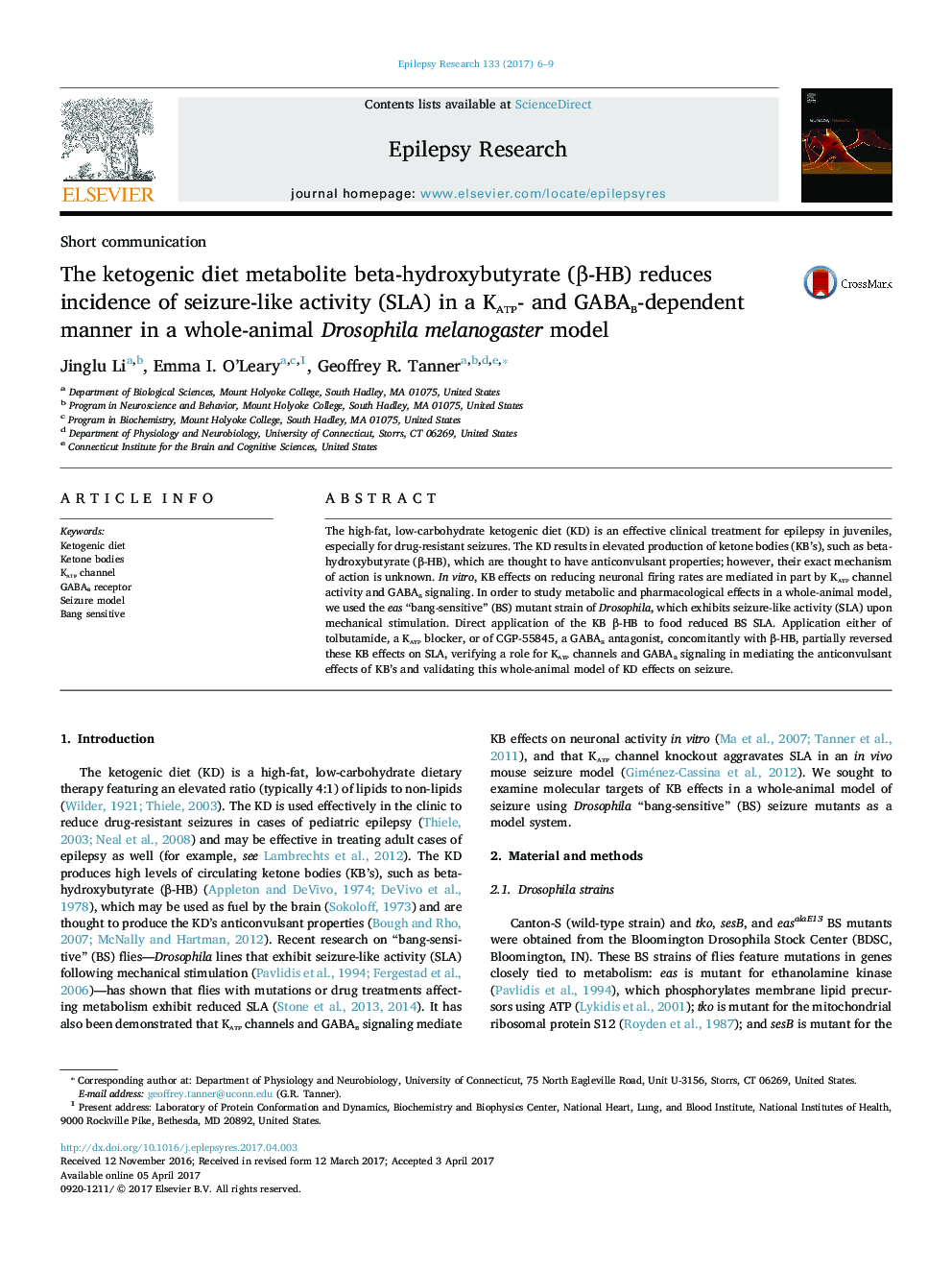| Article ID | Journal | Published Year | Pages | File Type |
|---|---|---|---|---|
| 5628591 | Epilepsy Research | 2017 | 4 Pages |
Abstract
The high-fat, low-carbohydrate ketogenic diet (KD) is an effective clinical treatment for epilepsy in juveniles, especially for drug-resistant seizures. The KD results in elevated production of ketone bodies (KB's), such as beta-hydroxybutyrate (β-HB), which are thought to have anticonvulsant properties; however, their exact mechanism of action is unknown. In vitro, KB effects on reducing neuronal firing rates are mediated in part by Katp channel activity and GABAb signaling. In order to study metabolic and pharmacological effects in a whole-animal model, we used the eas “bang-sensitive” (BS) mutant strain of Drosophila, which exhibits seizure-like activity (SLA) upon mechanical stimulation. Direct application of the KB β-HB to food reduced BS SLA. Application either of tolbutamide, a Katp blocker, or of CGP-55845, a GABAb antagonist, concomitantly with β-HB, partially reversed these KB effects on SLA, verifying a role for Katp channels and GABAb signaling in mediating the anticonvulsant effects of KB's and validating this whole-animal model of KD effects on seizure.
Related Topics
Life Sciences
Neuroscience
Neurology
Authors
Jinglu Li, Emma I. O'Leary, Geoffrey R. Tanner,
